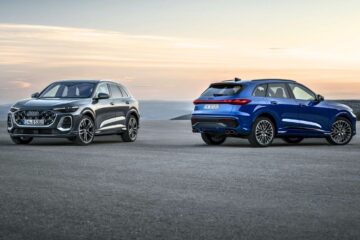Quick Highlights:
- Tesla Robotaxi launches in Austin on June 22 with limited Model Y fleet
- CyberCab stays off-road — first rides are in standard Teslas
- Rides are invite-only and geofenced via Tesla app
- Tesla Safety Monitors ride up front while remote ops track the cars
- First true driverless trip expected on Elon Musk’s birthday, June 28
Tesla is finally launching its robotaxi service this weekend, but don’t expect balloons or billboards. The rollout in Austin feels less like a bold announcement and more like a stealth test flight.
The service officially begins June 22 with a limited fleet of Model Y vehicles, not the CyberCab that was teased last year. Tesla has chosen a tightly geofenced area of Austin for its initial operation, and access is strictly invitation-only. Most early riders will be influencers, employees, or selected users chosen through the Tesla app.
Musk, as usual, teased the move in a casual post on X last week. He says the first true driverless trip from factory to front door will happen on June 28, which also happens to be his birthday.
Model Y Instead of CyberCab — and With Safety on Board

Despite years of talk around a driverless “CyberCab,” Tesla’s robotaxi debut is sticking to the Model Y. All rides will include a Tesla Safety Monitor in the front passenger seat for now. Remote operators will also track trips in real time.
Tesla says the cars will only drive in areas it considers the safest, and the company will closely monitor every ride. Trips to and from airports are blocked, and service can be pulled during bad weather. That’s all spelled out in the invite instructions shared by Tesla fans on social media.
Price and App Access

There’s no official pricing structure yet. Rides are booked through the Tesla app and are invite-only. Some early testers report being offered free trips, while others mention being prompted with payment options; however, details are inconsistent and not publicly available.
As of now, there’s no clear answer on when the app experience will open up to the public or when Robotaxi pricing will be revealed.
It’s clear Tesla is still tweaking the ride-hailing flow, and possibly testing public reaction before committing to a full commercial model.
Why Elon Can’t Afford to Wait

Tesla’s robotaxi push is years behind schedule. Musk originally promised a working autonomous fleet by 2020. Now, with pressure mounting from investors, falling EV sales, and competition from Waymo, the company is sprinting to catch up.
In recent interviews, Musk confirmed Austin is only the beginning. Los Angeles and San Francisco are next, and he expects a small fleet of 10 cars to start, just enough to gather data and keep expectations in check.
Wall Street is watching closely. Analysts like Dan Ives say robotaxis could trigger a “golden era” for Tesla, predicting the company could double its market cap within a year if autonomous tech starts to scale. But there are roadblocks ahead.
Legal Pushback Already Started

Not everyone in Texas is on board. A group of lawmakers has asked Tesla to delay the launch until September, when updated self-driving laws take effect. They want more proof that Tesla’s system is safe and compliant.
Meanwhile, safety critics like The Dawn Project are calling the rollout dangerous. Earlier this month, the group released a video showing Tesla’s “Full Self Driving” mode failing to stop for a child-sized mannequin. They say the tech isn’t ready and shouldn’t be live on public roads.
Tesla didn’t respond publicly, but the tension is already part of the story.
What’s Next?
Tesla is betting big on Robotaxi. Musk wants to turn everyday vehicles into revenue-generating ride services. But right now, it’s a small, invite-only rollout in one city, with no public pricing, no wide app access, and plenty of controversy.
Still, the robotaxis are rolling. And Tesla’s doing it the only way it knows how — quiet, fast, and just a little chaotic.
In Short
Tesla’s robotaxi service launches in Austin on June 22 using Model Y vehicles. Rides are invite-only via the Tesla app, with safety monitors inside and remote teams watching. The futuristic CyberCab stays parked for now, and the price is still a mystery.
It’s not a splashy launch — more like a guerilla test. But that’s probably exactly how Elon planned it.
Source: Elon Musk via X, Tesla App, and on-ground reports from Austin and San Francisco testing
Read More:




